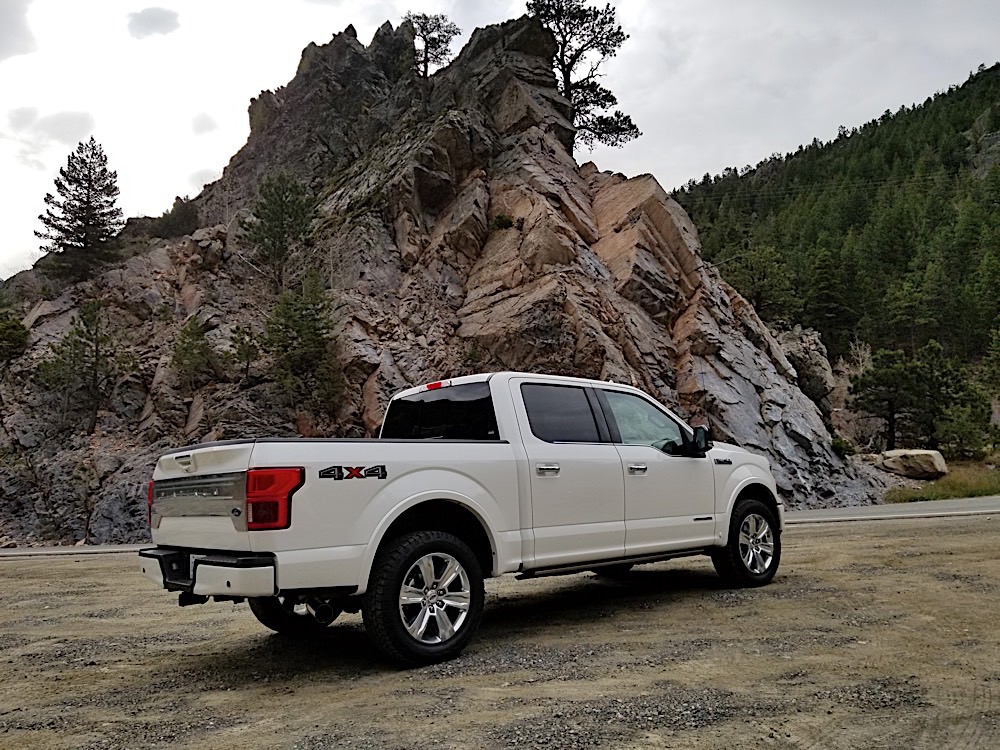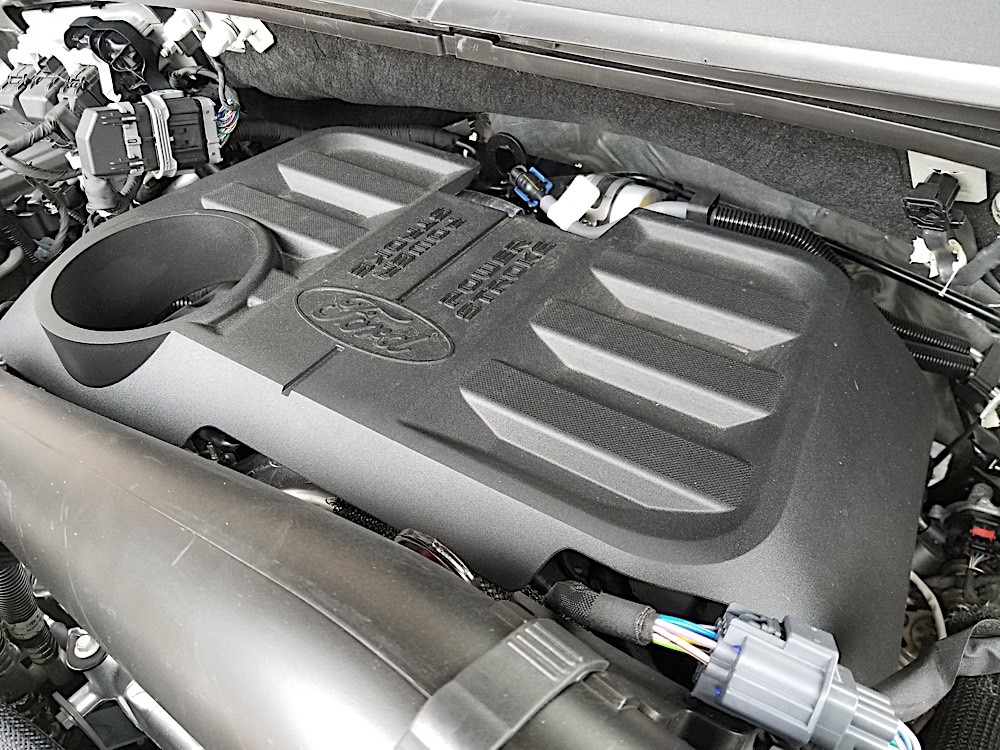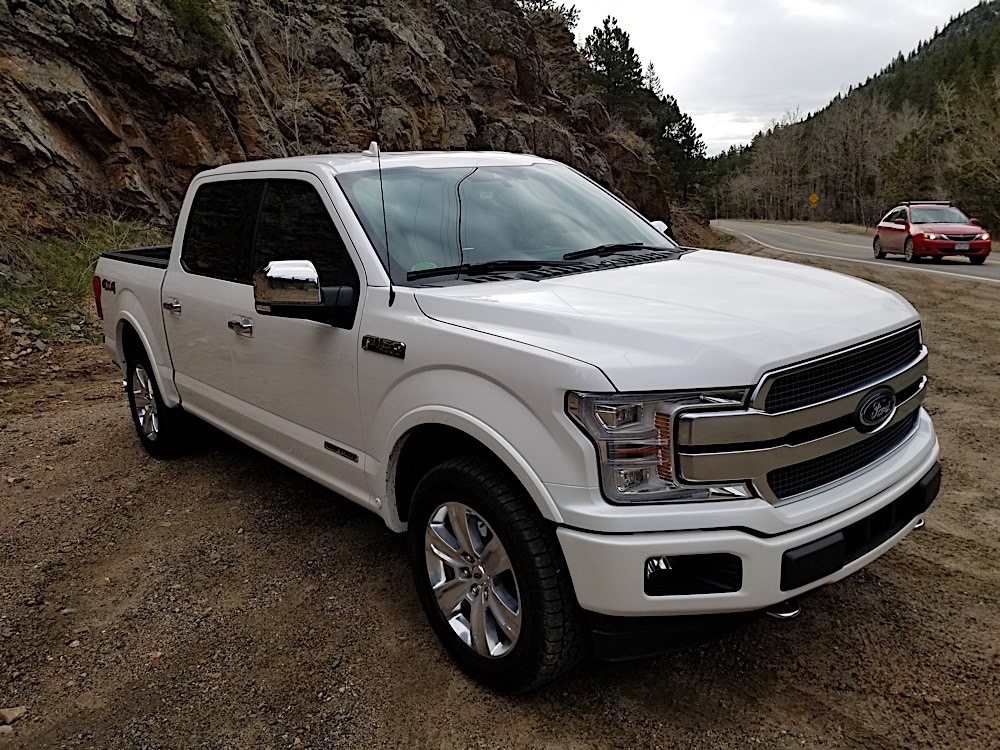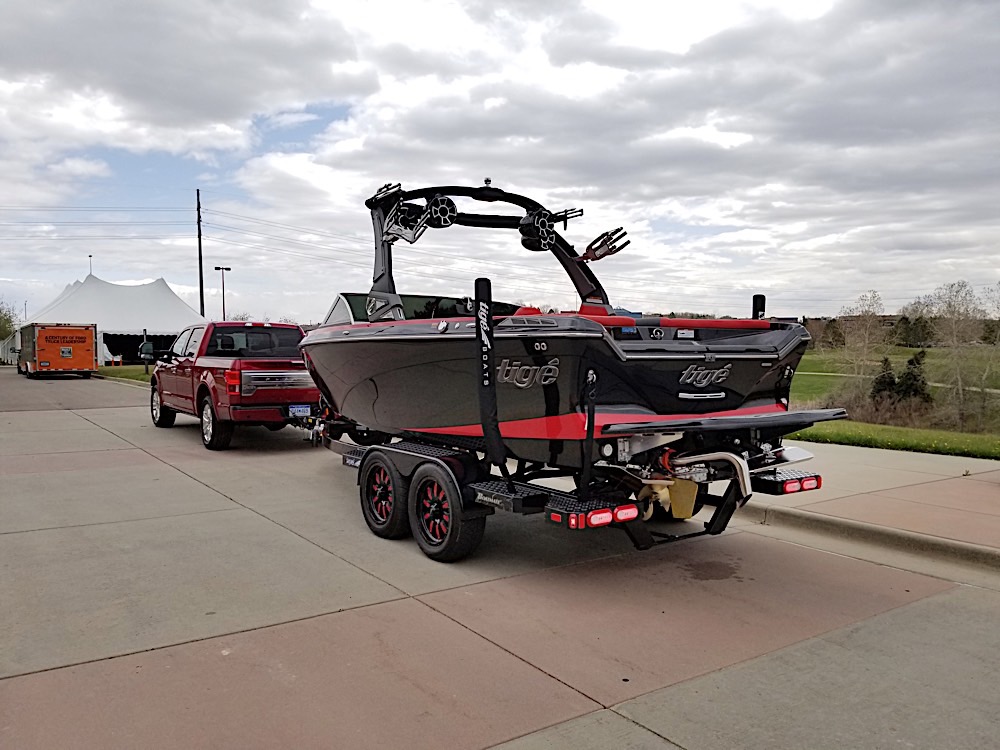First Drive: We Go Off-Roading in the 2018 Ford F-150 Diesel!

Better towing, torque, and fuel economy are highlights of new diesel.
If you wanted to have a diesel engine in your half-ton pickup truck, you had to buy a Ram. If you’re a Blue Oval fan and wanted a Power Stroke, you had to buy a Super Duty. Until now.
Recently, we were invited to drive the all-new 3.0L Power Stroke diesel in the 2018 F-150 at altitude in Denver, and into the Rocky Mountains. Putting it through the ringer at this specific location is a good idea. A really good idea.
Let’s refresh the details: For approximately $4,000 more than a 2.7L Lariat and $2,700 more than a 3.5L EcoBoost in a King Ranch, Platinum, or Limited, you get a 3.0L V6 engine with 250 horsepower and 440 lb-ft of torque.

That brings max towing with this engine to 11,400 pounds and 2,020 pounds of payload. It’s also EPA-rated 30 mpg on the highway.
The engine originated in Europe, codenamed “Lion,” and appears in Jaguar’s Land Rover products. When it made its way across the pond, many things changed. The dual turbo setup was replaced for a single turbo. The calibration is different. The tuning is different. It’s as close to an all-new engine that you’re going to get without it being all-new.
It’s mated exclusively to Ford’s 10-speed automatic transmission–sorry, manual fans–and is only available in Lariat trim or higher. Fleet buyers have access to it in XL trim. They had one on hand with 1,000 lbs of payload and it was a hoot to drive.

Considering that it was cooler during our testing period, we had the heat on in our truck, we averaged 23.6 mpg over a long drive route with tons of elevation change that started at 5,500 ft above sea-level. We were in a 4×4 Platinum SuperCrew and driving normally. In the climb up the hill to 8,888 ft, we were at about 18 mpg. We gained the economy on the return trip.
All things considered, we were impressed with that number. It’s better than what we’d expect from the 2.7L EcoBoost, which is the F-150’s gasoline fuel economy play.
We then hooked up to a horse trailer weighing in at 5,500 lbs and hit the streets. Around town, the truck feels like a 2.7L EcoBoost, either loaded or unloaded, and power delivery is quite linear. If you didn’t know any better, you’d think you were in the 2.7L truck.

On the highway, putting your foot down gradually moves the truck forward, depending on the grade. It might not be as quickly accelerating as the 3.5L EcoBoost with a load, but the fuel economy is far better when you’re doing it.
The ‘I don’t know it’s a diesel’ theme translated throughout the day. Unless you’re standing outside the truck, you can’t hear the engine. Even under load, you don’t hear the clacking of the engine. It sounds, in a lot of ways, like a gasoline engine.
Redline is at 4,400 rpm, which obviously means you run out of steam before you would in the 2.7L EcoBoost, but up until that point we wouldn’t be surprised if the trucks were neck and neck.
